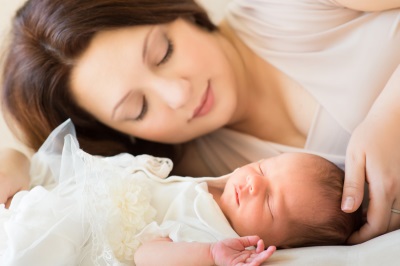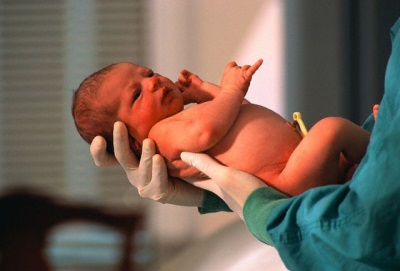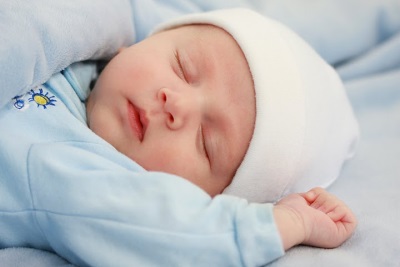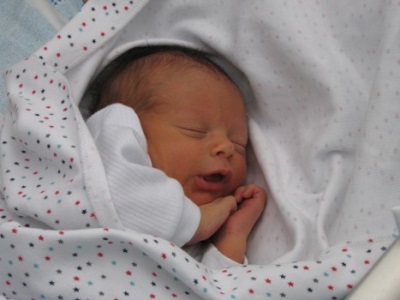Newborn development by week
The first days and weeks of a child’s life are difficult for both parents and babies. Moms and dads in the neonatal period, which lasts 4 weeks after birth (28 days), learn to care for and care for the baby, and the child adapts to the new living conditions. How successful these processes will be depends on many factors. And one of them is understanding how exactly newborns develop in order to respond to any problems in time and contact a pediatrician to eliminate them.

The main stages of development
Even during his stay in the maternity hospital, the child begins the stage of adaptation to the changed living conditions. At this stage, all organ systems of the crumbs are adapted to the new conditions:
- Lungs start working, and the blood circulation is rebuilt for functioning with the inclusion of a small circle.
- Crumbs head in the first days of life it is quite often elongated, which is connected with the suppleness of the bones of the skull and the passage of the baby through the birth canal. Her form becomes regular to 2 weeks of age. In addition, many babies have a generic tumor on their heads, which disappears without a trace in 1-2 days.
- The skin immediately after birth is reddish.. From the third day on many babies, it acquires a yellow tint - this is how physiological (harmless) jaundice manifests itself, which normally disappears by 2 weeks of age.
- The nervous system is very sensitive and is active. Various unconditioned reflexes manifest, among which the main ones are searching and sucking.

- Thermoregulation is imperfect, therefore, the crumbs are frequent sharp drops in body temperature. The baby overheats easily and freezes quickly.
- The newborn has excellent hearing, smell, taste and touch. At the same time, the child’s vision is weak, he sees everything as blurry and blurry.
- Many babies after childbirth have a slight squint due to weak eye muscles.. This state passes with time independently.
- Urination on the first day occurs 4-6 times, and then the number of urinations per day reaches 15-20 times. For many children, the first day urine becomes reddish, which is the norm and is associated with a low water content in the colostrum.
- In the intestines of the crumbs, which was previously completely sterile, get different microorganisms. Meconium (so-called dark feces, which have accumulated in the baby's digestive tract by the time of birth) starts to stand out from the intestines, and then the feces brighten and become more fluid.
The release of the program of the famous pediatric doctor E. Komarovsky, dedicated to newborn children, see below:
At the next stage of development, which begins after discharge, parents have to face various difficulties, for example, colic, often disturbing an infant from 2-3 weeks of life.
Also new mom can expect the difficulty of establishing lactation, which is best deal with frequent stitching.
By the end of the neonatal stage, babies change noticeably - their facial features become clearer, the postpartum puffiness disappears, the gaze focuses on faces and objects.
Muscles crumbs strengthened, which allows him to briefly lift his head and move his limbs. In addition, the baby pleases loved ones with a “revitalization complex” - recognizing their faces, active movements and manifestation of positive emotions.

Weekly development calendar in the table
Age | Skills |
Week 1 (7 days) | Holding the head for a few seconds. Focusing gaze at a distance of 5 to 15 cm. Involuntary closing of fingers and handles. Involuntary smile. Recognition of the smell of breast milk. Response to bright light by blinking and closing eyes. Revitalization at the approach of parents. |
2 weeks (14 days) | Looking at an adult, involuntary winks and funny grimaces. Turning the head to the voice of the mother or the sound of a rattle. Fixation of a sight on a bright toy with a diameter up to 10 cm. |
3 weeks (21 day) | Holding the head up to 5 seconds, lifting it after a short rest. Recognition of mom and dad. Looking at objects and persons at a distance of 50 cm. Fading at the sight of something new and sharp unfamiliar sounds. Grabbing fingers and hair of parents. Animation at the sound of a familiar voice. |
4 weeks (28 days) | Active movement with legs and arms. Recognition of mom's voice and smell. Focusing on objects and faces up to 1 m. The expression of emotions different cry (dissatisfied, joyful). Raising the head while lying on the tummy for up to 5 seconds. Holding the gaze on my mother's face or a fixed object in sight for a long time. Active viewing of the world from the hands of an adult. Strong holding fingers of an adult. Holding the gaze on a moving object for up to 7 seconds. Agukanie. |
First week
In the first days of life, the baby and mother meet each other, and The infant’s primary need is close contact with mom. The best food for karapuz is colostrum, which after a few days gives way to mature milk, adapting to the needs of the crumbs.
Externally, the child does not yet look like babies in the pages of the magazine. The crumbs face after birth is asymmetrical, often there is swelling on the head, and the head itself is flattened and slightly stretched into an oval.
The skin is often red and only turns pale by the end of the first week. Some children have skin flaking on the chest and abdomen at 3-5 days of life. Slight yellowness from the 3rd day of life is also considered normal.
In addition, in the first week, such features are noted:
- Muscle tone in the first week increased.
- The little ones have no tears in the first weeks of life, and the sweat glands are still developing (their function is getting better by the 7th day of life).
- On the mucous membranes should not be plaque, it should normally be wet and pink.
- By the end of the first week, the umbilical wound dries out and tightens.
- The nose of the baby sometimes covers a rash in the form of small white dots.
- The baby's heart is reduced 110-170 times per minute, and the normal respiration rate per minute is 30-50 times.
- From the second or third day, instead of meconium, a yellowish stool with a sour odor starts to stand out about 4-5 times a day (during breastfeeding).
About how the baby looks in the first days after birth, look in the video:
Second week
Redness of the skin, swelling, and yellowing often disappear this week. The crumb begins to gain weight, and the hyper tone in the limbs, which is considered the norm for a child's first month of life, is still there. The baby has not yet learned to hold his head, but movements of the legs and arms of the little ones while involuntary and chaotic.
There are such nuances:
- The baby sleeps most of the day (about 16-20 hours).
- Thermoregulation has not yet been adjusted.
- The hands and feet are covered with dry skin.
- Marigold grow back, so they already need to mow.
- The skin of many babies begins to peel off.
- Urination account for at least 15 per day.
- The baby’s intestines are emptied 3-4 times a day, and the stool is mushy, yellow.
Third week
The movements of a toddler's limbs older than 2 weeks are already becoming less chaotic, and the skull of most babies in the third week of life has regained its shape.
The activity of the baby is growing, and because of the abundance of impressions, many babies become irritable towards evening.
Crying crumbs change, acquiring intonation, for example, when the baby is disturbed by something, the cry will be loud and demanding.
For the child of the third week of life are also such features:
- The sense of smell of the baby becomes sharper.
- The kid begins to feel the balance and position of his own body in space.
- Breastfeeding at this age is at least 10-12.
- The little dog begins to recognize the faces and voices of loved ones.
- The mode of the day is only established, the crumb still spends most of the day in a dream.
Bowel emptying at this age occurs from 2 to 8 times a day. When breastfeeding stools are yellow, with butter-milky smell and mustard consistency. If the baby gets a mixture, the stool is 1-4 times a day, and the stool is darker and harder, with an unpleasant smell and a brownish tinge.
Fourth week
The development of the baby this week is at a high pace. The little one is getting better and better adapted to the world around it, rejoices at parents, watches toys and begins to cheer. Sleep in the day of the child of the fourth week of life takes about 17-19 hours, and the number of feedings is at least 6-7.
Such features of development are noted:
- The child’s legs and arms are still bent, and the cams are clenched.
- The child has not yet learned to coordinate his movements well.
- Baby is actively learning to hold his head.
- When dissatisfied, the peanut cries loudly and moves abruptly, for example, has his legs twisted when he is worried about colic.
- The eyes of most babies are blue, but with age they can change color.
- The vision is not yet fully full, so it is difficult for the crumbs to concentrate their eyes.
- Tears begin to stand out.
How many grams do newborns gain per week?
The weight gain of a newborn baby depends on various factors (gender, mom's nutrition, heredity, health, and others), but there are average indicators showing how much the baby averages on each week of life.
Weight and how much a baby should add:
First week | Boys are born with a weight of 2500-4400 g, girls - with a weight of 2400-4200 g. In the early days, the loss of up to 10% of weight is normal (on average, 5-7% lose), with which the baby was born, but by the end of the first week the baby often gains this weight back, and some babies also add up to 100 g. |
Second week | At the beginning of this week, the weight of the child is about the same with which he was born, but some babies in the second week still return the weight lost after birth. Most babies are beginning to actively gain weight and gain an average of 150-250 g (at least 20 g per day). |
Third week | This week, kids add about 200-250 g. |
Fourth week | By the end of the week, the child adds an average of 170-200 g, so the weight of boys at 4 weeks is 3400-5800 g, and that of girls - 3200-5500 g. |
Remember that the data in the table are approximate, and each tot is developing individually, so small deviations are allowed. If the differences from these indicators are significant, consult your pediatrician.














